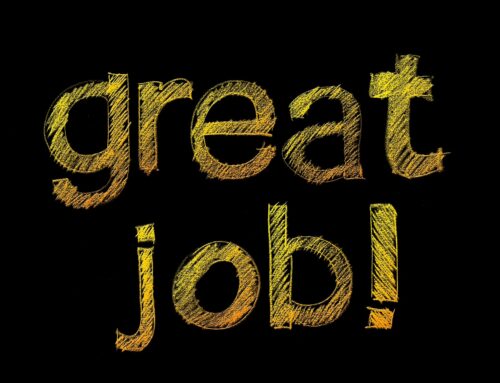In the early days of 2019, you may be asking yourself, with respect to the previous year, what just happened? What kind of year was it for me? How do I want this year to be different? What changes might I want to make?
In practice, coaches don’t look backwards much. We steer clients from ruminating to focusing on what’s possible. Instead of asking a client to look back and think about why they responded in a particular way, we will ask how they can think about it differently or what they can do in the future for a better outcome. We are looking ahead, rather than in the rear view mirror for our cues.
As a former lawyer, however, I was a big believer in debriefing. I led a group of government attorneys through the uncertain terrain of testing a new law in the appellate courts and we had our fair share of disappointments. My orientation was to meet afterwards to figure out what didn’t work and how we could do it better next time. In other words, solve the problems.
I relied on the typical approach of organizations—focusing on problems rather than on opportunity. An alternative approach exists called appreciative inquiry (AI) pioneered by David L. Cooperrider, co-author of “Appreciative Inquiry Handbook.” AI has been used to drive change in organizations of all types and sizes around the world, including Cleveland Clinic, British Airways, McDonalds, Milton Hershey School and the Pennsylvania Historical Society, to name just a few.
While the focus in Cooperrider’s work was organizations, AI is also used in one-on-one coaching to help clients reframe their problem-focused thinking to an opportunity-focused orientation.
AI is based on the simple assumption that every person, team or organization has things that works well, and those strengths can be the starting point for creating positive change. “Inviting people to participate in dialogues and share stories about their past and present achievements creates energy and excitement and a desire to move toward a shared dream.” The same is true for individual dreams and AI can be used to ignite it.
It’s a complete paradigm shift. A problem-solving orientation starts with the problem to be solved, explores what is not wanted and looks for root causes of failure, weaknesses, problem areas, breakdowns and low points. An II perspective starts with the opportunity and instead explores what is wanted, root causes of success, strengths, best practices, breakthroughs and high points.
It works because it recalls, revisits and reminds us of prior successful outings. Many people fear change, but when a plan is based on what we have done well in the past, we will have more confidence and optimism toward performing well in the future too. Thoughts and words create our worlds. Our beliefs about an experience and how we talk about it (even to ourselves) shapes the future. One of the core principles of AI is the anticipatory principle, which says that images inspire action. The more positive and hopeful the image of the future, the more positive the present-day action will be.
Here’s a simple example: A client was going to the holiday party at her organization. As a newly hired executive, it was going to be her first one. She was dreading it because a few co-workers told her it was always a terrible party, that no one has a good time, and that everyone feels forced to go. We needed a shift in thinking to have a chance at a good experience.
AI is premised upon a “4-D Cycle.” The four stages of AI work this way:
Discovery: The first step in any situation is to discover and divulge its positive capacity. The discovery stage aims to find, emphasize and illuminate any factors that have led to the best in a given situation. The importance of discovery is to remind yourself of what success looked and felt like by activating vivid memories of experiencing it. Discovery also reminds us that we are powerful and capable of experiencing success. Start by looking at peak experiences.
I asked the client, setting aside the dire forecasts, to tell me about a time when she went to an event that she wasn’t looking forward to and ended up having a good time. What were the factors that influenced that? How did she bring about a positive outcome? What strengths does she have that can bear fruit in a social situation?
Dream: The dream phase challenges the current status quo by envisioning a preferred future. In the dream stage, you focus on the possibility of what could be rather than on the limiting ways people normally do, feel, see, act or react, and you will begin to see things in a new way. What if the descriptions of the party say more about the people giving them than the party itself? What if they, through their thoughts, words and actions created an experience that was less than optimal? How can you influence this experience with your own thoughts, words and actions? For example, “when I attend parties, I enjoy myself because of my talent for identifying like-minded people and gravitating toward them.” Really envision a successful outcome. This is why vision boards work—they keep your dream at the top of the mind as visual representations of the desired state.
Design: By using grounded positive examples from the past, future images emerge and we can create attainable goals and steps, transforming “I can’t” to “what do I need to achieve the desired outcome?” In my example, I asked the client how she could use her prior success in similar situations to impact her own experience and advance relationships in this new company. She realized people would be there whom she already likes and could start with them and then look for others who seemed happy to be there.
Destiny: The destiny phase delivers on new and improved images of the future, cultivating a sense of empowerment. Through the process of AI, my client was able to see that the future is not solely dictated by the opinions, thoughts or actions of others and that she can positively influence the company event just as she had done in past experiences. Once reminded of her own influence, she went to the party with a completely different attitude, no longer dreading it. Because of that, she looked for opportunities and was able to engineer her experience of the event and enjoy her first company party at her new job. She had a great time.
I use AI often. In one instance, I was coaching an entrepreneur who was completely stuck in fear of not being able to start and run a company. I asked her about a time when she was part of a successful endeavor and she unearthed a memory of a role she had where she did the exact same thing for another company that she now needs to do for her own. It was quite the “aha moment” and she was surprised she hadn’t thought of it before.
It’s amazing what we can forget about our own achievements and overall awesomeness and I invite you to take a look back at 2018 and take inventory of your accomplishments, the key strengths that sustained you, core values you honored and opportunities that await in 2019. Happy New Year!
Reprinted with permission from the January 2, 2019 edition of “The Legal Intelligencer” © 2019 ALM Media Properties, LLC. All rights reserved. Further duplication without permission is prohibited. For information, contact 877-257-3382, reprints@alm.com or visit www.almreprints.com.






